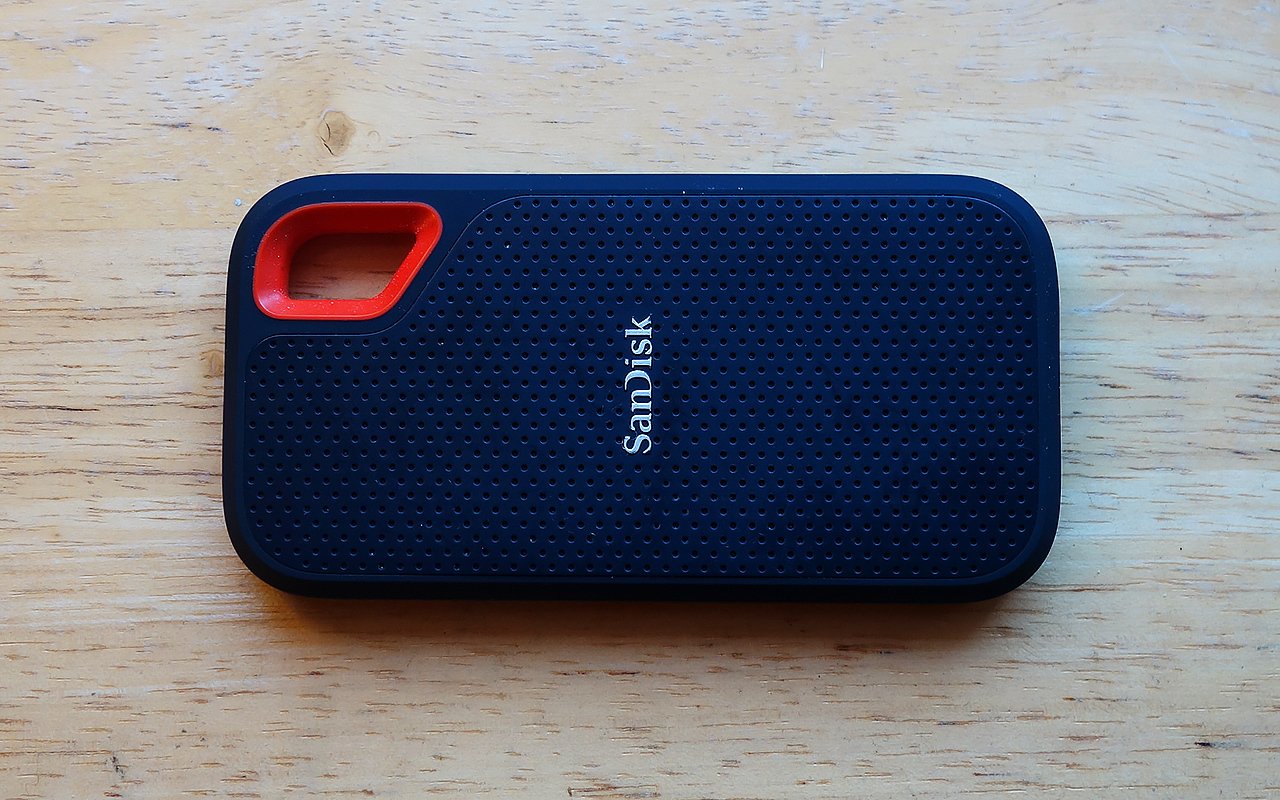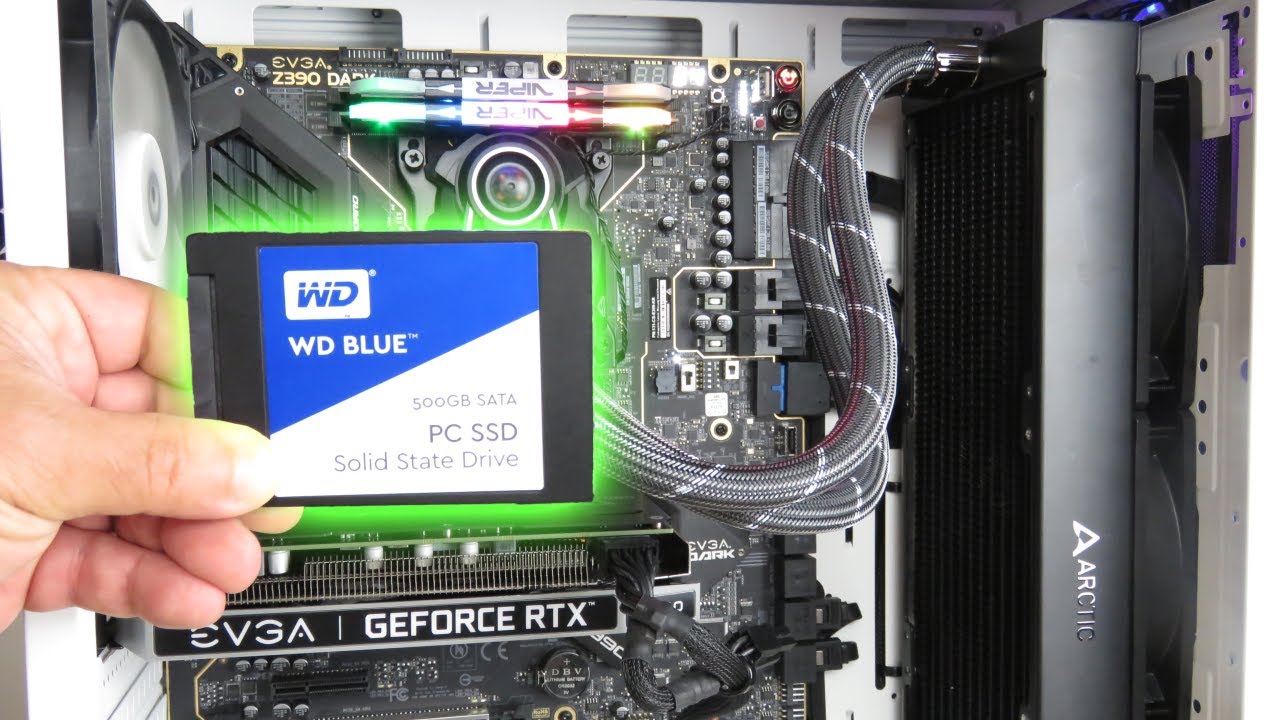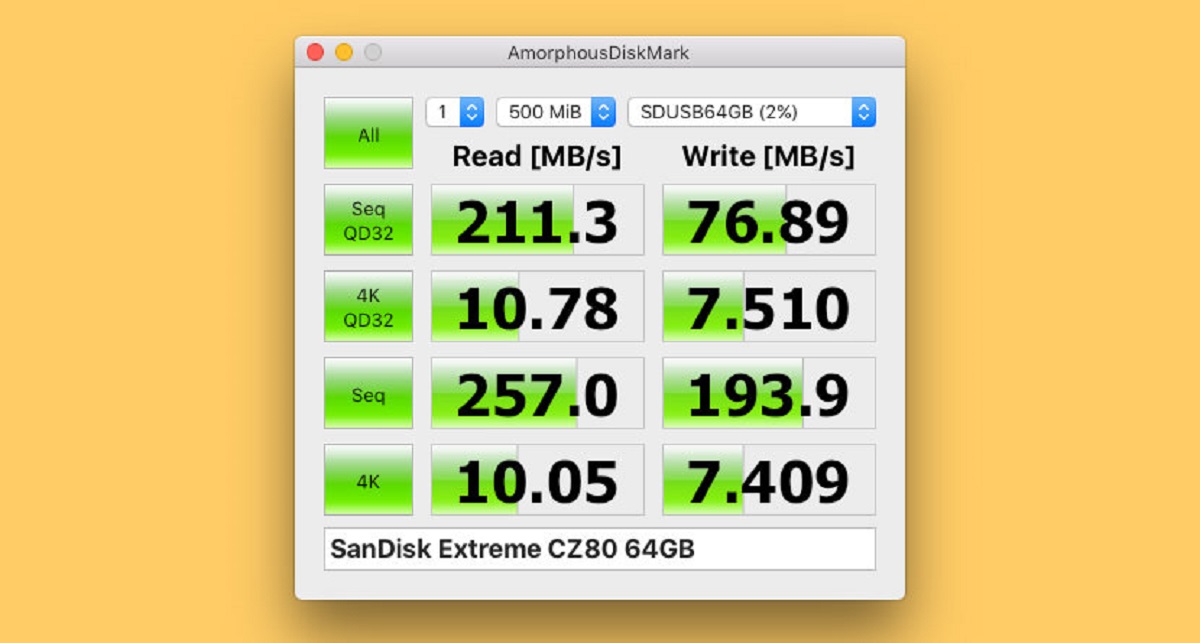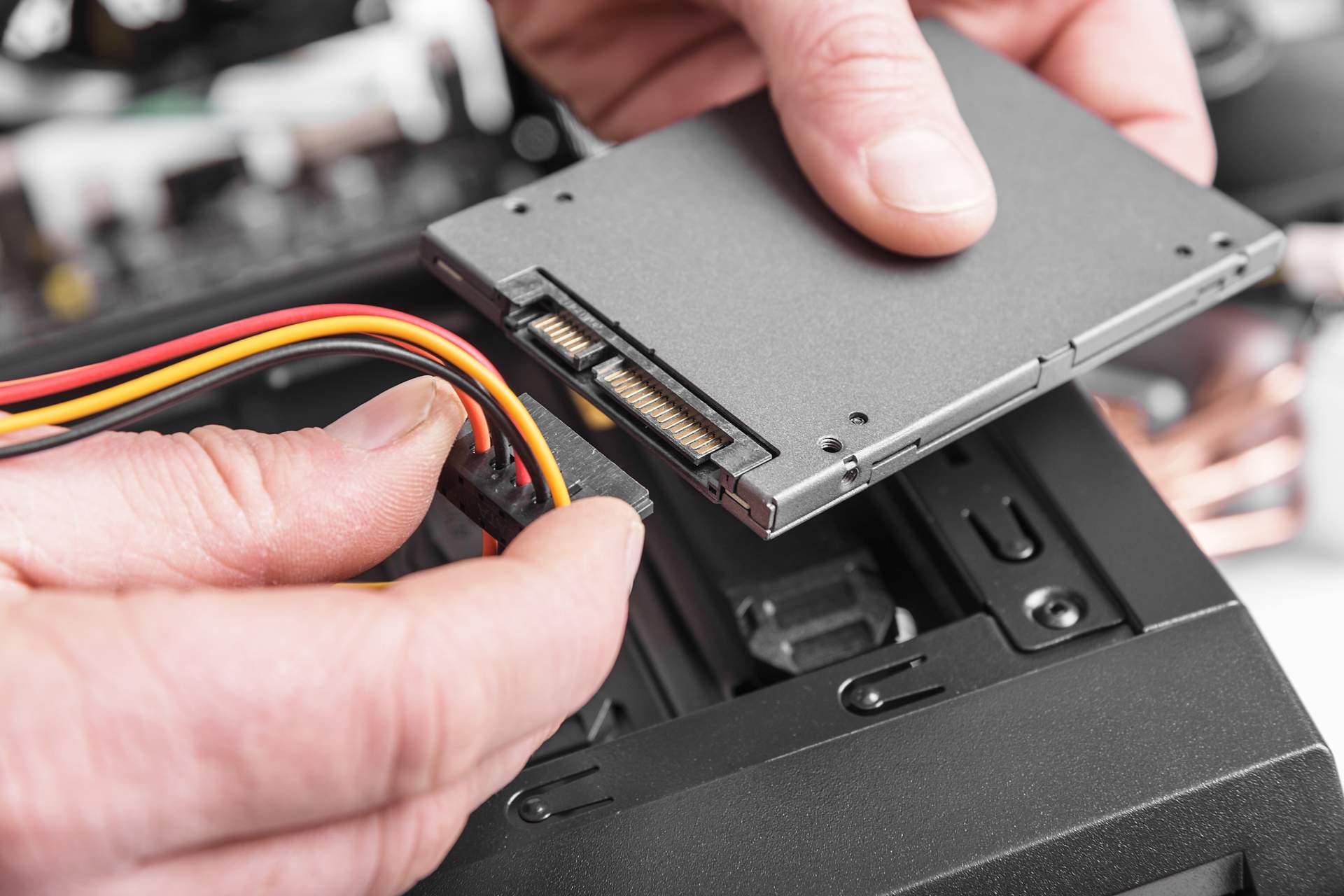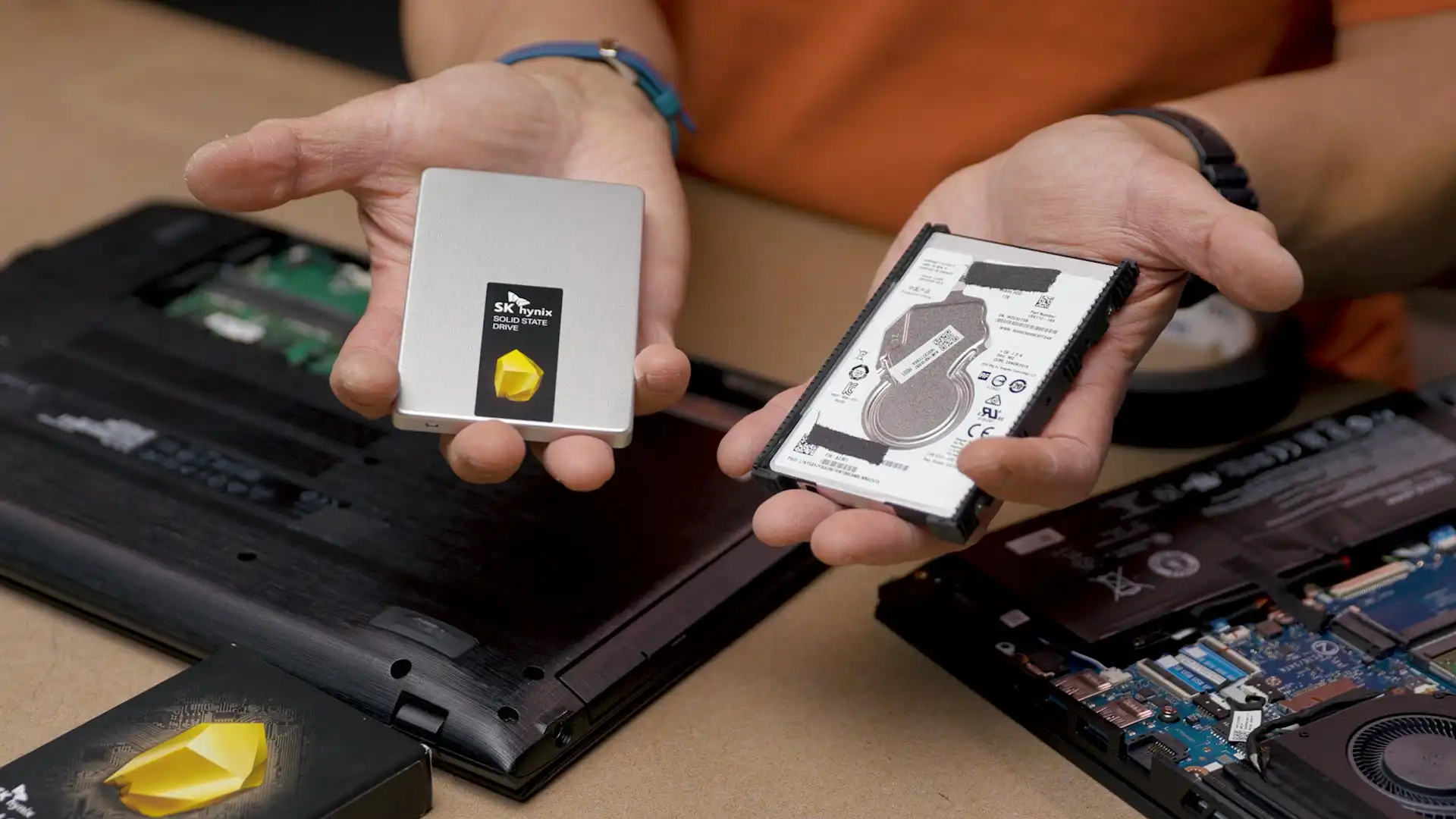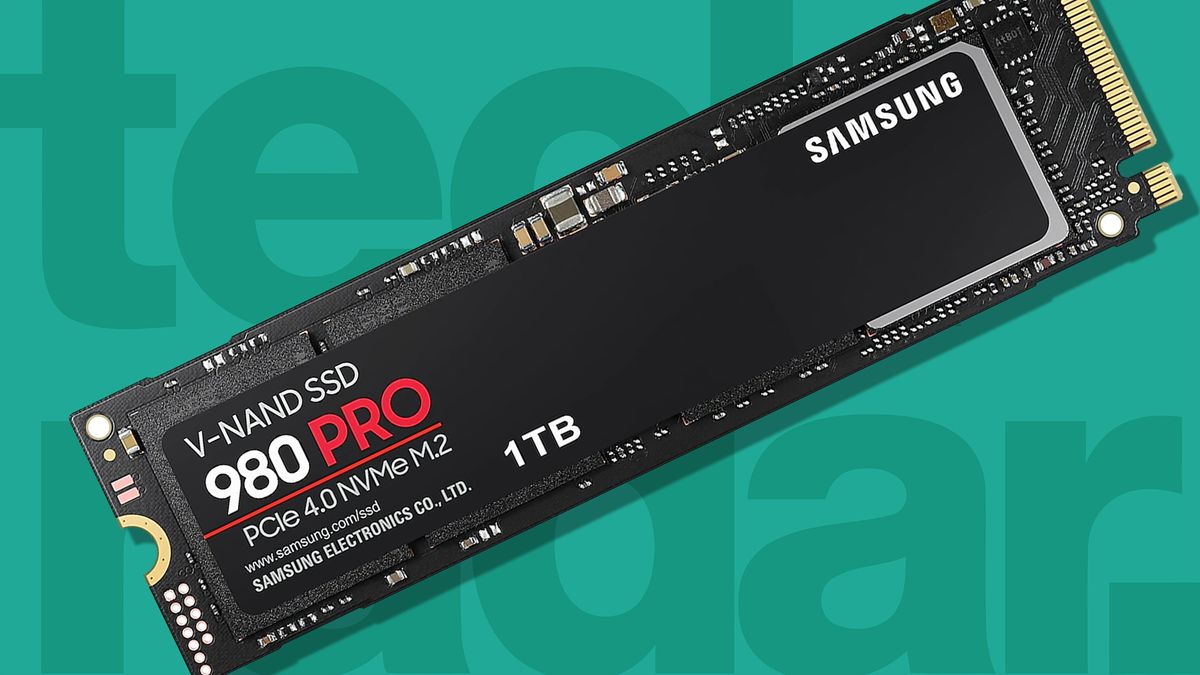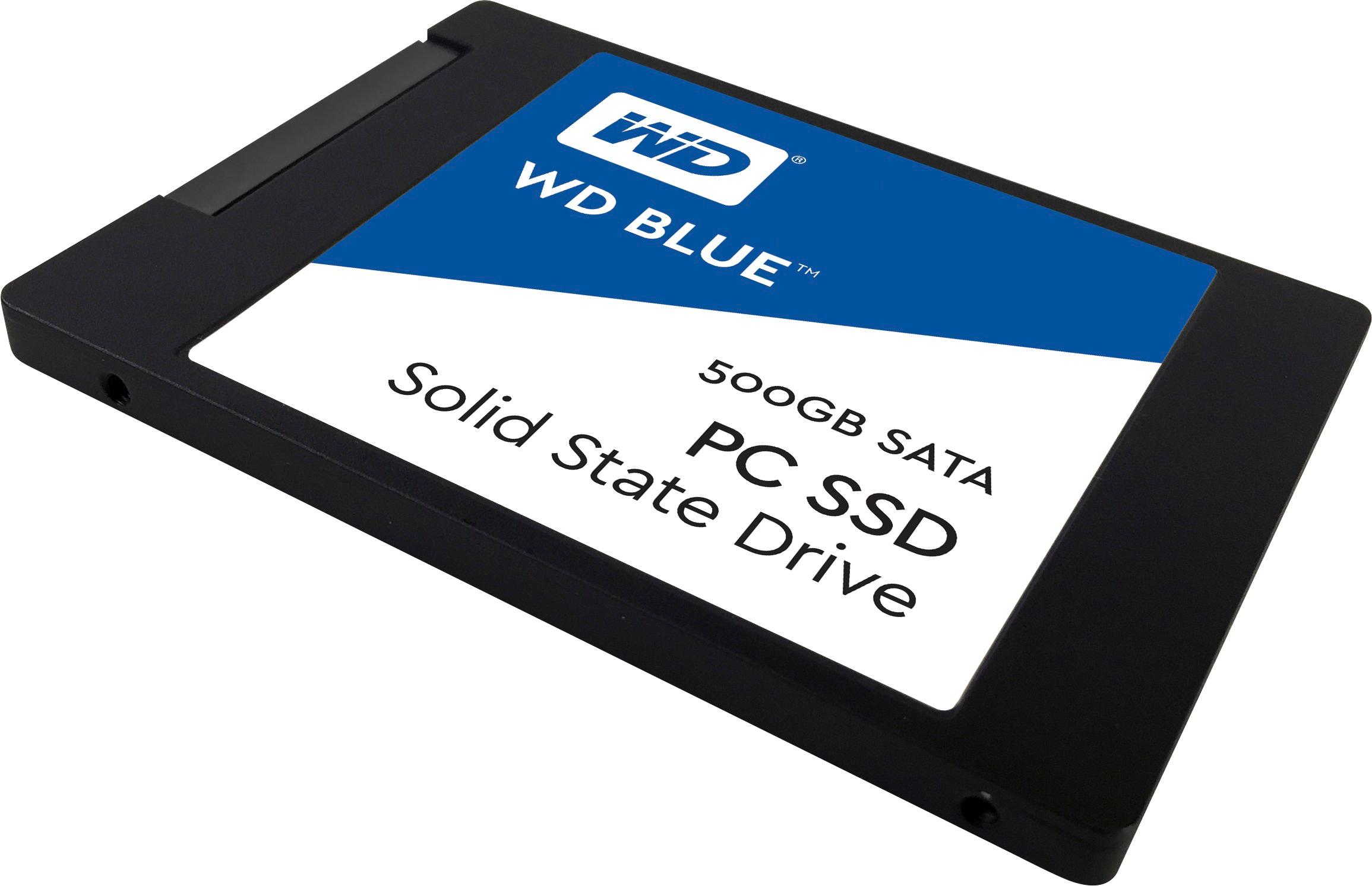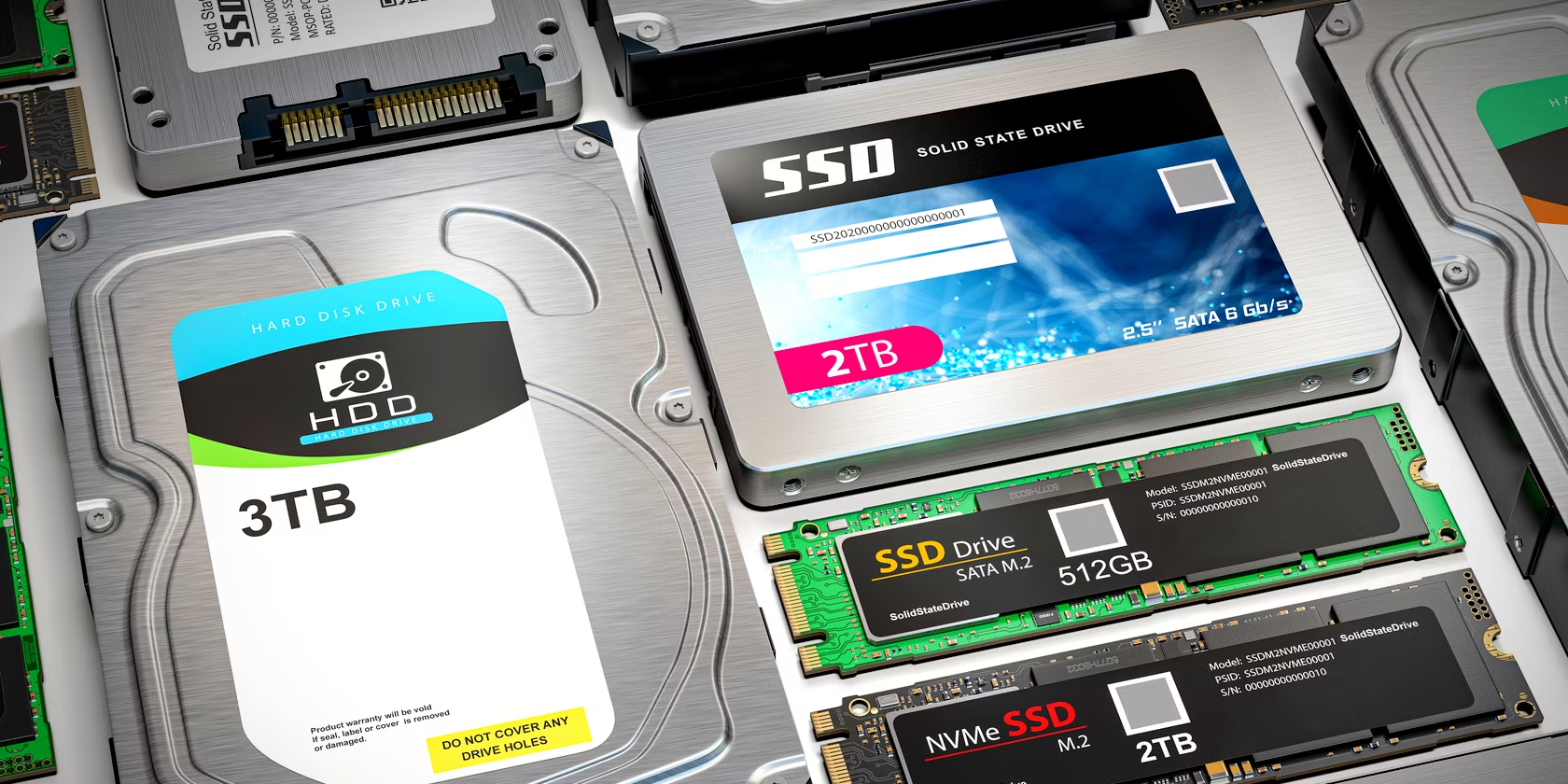Introduction
Is your SSD (Solid-State Drive) suddenly stuck in read-only mode? If so, you’re not alone. Many users have encountered this issue, where they are unable to write or save any data to their SSD. This can be a frustrating experience, especially if you rely on your SSD for storing important files and running applications.
Understanding why your SSD has become read-only is crucial in finding a solution. In this article, we will explore the common causes for an SSD to become read-only and provide you with solutions to fix this issue.
An SSD operates on non-volatile flash memory, making it faster and more reliable than traditional hard disk drives. However, like any other electronic device, an SSD can encounter problems from time to time. One of the most common problems is when the drive becomes read-only, preventing you from making any changes or modifications to the stored data.
There are several possible reasons why your SSD may have entered read-only mode. It could be due to file system errors, physical damage to the drive, software or firmware issues, or even the presence of viruses or malware. Each of these causes requires a specific solution to resolve the read-only problem.
In the following sections, we will delve deeper into each potential cause of an SSD being stuck in read-only mode and provide you with step-by-step solutions to help you overcome this frustrating issue. By the end of this article, you will have a clear understanding of what might be causing your read-only SSD and how to fix it.
Understanding the concept of read-only mode
Before we explore the reasons behind an SSD entering read-only mode, let’s first grasp the concept of what read-only mode means for a storage device.
Read-only mode, as the name suggests, is a state in which you can only read data from a storage device and are unable to write, modify, or delete any data. When an SSD is in read-only mode, it essentially becomes a one-way street, allowing you to access and retrieve data, but preventing any changes from being made.
This mode is typically implemented as a protective measure by the SSD’s firmware or operating system when it detects an issue with the drive. By restricting write access, the system aims to prevent further damage to the data and preserve its integrity.
While read-only mode may seem like an inconvenience, it serves an important purpose. It ensures that even if something goes wrong with the SSD, such as file corruption or physical damage, the existing data remains intact and can be accessed for recovery purposes.
Additionally, read-only mode can also be used as a security feature. Suppose you are dealing with sensitive data and want to prevent any accidental or unauthorized modifications. In that case, enabling read-only mode can provide an extra layer of protection.
Keep in mind that read-only mode is not specific to SSDs alone. It can also be encountered with other storage devices, such as USB drives or SD cards. Regardless of the type of device, the underlying purpose remains the same: to safeguard the data and prevent any unintended changes.
Now that we have a basic understanding of read-only mode, let’s explore the different causes that can lead an SSD into this state.
Common causes for SSD to become read-only
When your SSD gets stuck in read-only mode, it’s important to identify the underlying causes in order to find an appropriate solution. Let’s take a look at some of the common factors that can lead to an SSD becoming read-only.
- File system errors: In some cases, issues with the file system on the SSD can trigger read-only mode. This can occur due to improper shutdowns, system crashes, or even software conflicts.
- Physical damage to the SSD: Any physical damage to the SSD, such as a loose connection, faulty controller, or bad sectors, can result in read-only mode. It’s important to check for any visible signs of physical damage or consult a professional if you suspect this to be the cause.
- Software or firmware issues: Outdated or incompatible software or firmware can cause conflicts with the SSD, leading to read-only mode. Updating to the latest firmware or resolving any software compatibility issues can help resolve this problem.
- Virus or malware infections: Viruses or malware can corrupt the file system or interfere with the SSD’s functionality, forcing it into read-only mode for protection. Performing a thorough scan and removing any malicious software is essential to restore normal SSD operation.
Each of these causes requires a specific approach to resolve the read-only issue. In the next sections, we will explore potential solutions for each scenario, enabling you to address the problem and regain full read-write access to your SSD.
File system errors
File system errors can often be the cause behind an SSD entering read-only mode. These errors can occur due to various factors, such as improper shutdowns, system crashes, or conflicts with other software. When the file system encounters issues, it can become corrupted or unstable, leading to the SSD being forced into read-only mode as a protective measure.
To fix file system errors and restore read-write access to your SSD, you can follow these steps:
- Check the file system: Use the built-in disk utility or a third-party software to check the file system on your SSD. This will help identify any errors or inconsistencies that may be causing the read-only mode. If any errors are detected, proceed to the next step.
- Repair the file system: Once the errors are identified, you can initiate the file system repair process. This can be done through the disk utility by selecting the SSD and choosing the option to repair or fix the file system. Allow the repair process to complete and check if the read-only mode issue is resolved.
- Safe boot and repair: In some cases, certain software conflicts or startup items can cause file system errors. To troubleshoot this, try booting your computer in safe mode and then attempt to repair the file system. Safe mode disables unnecessary software and drivers, reducing the chances of conflicts. If this resolves the read-only issue, it indicates a software conflict that needs to be addressed.
- Backup and reformat: If the above steps do not fix the file system errors, it may be necessary to back up your data and reformat the SSD. This will involve erasing all the data on the SSD and reinstalling the operating system. Remember to ensure you have a backup of your important files before proceeding with the reformatting process.
By following these steps, you can address file system errors that may be preventing your SSD from operating in read-write mode. If the read-only problem persists after attempting these solutions, it may indicate other underlying causes that need to be investigated.
Physical damage to the SSD
Physical damage to the SSD can also be a culprit behind the read-only mode issue. Any physical harm or malfunction in the SSD’s hardware components can lead to it entering a protective read-only state. It is important to inspect your SSD for any visible signs of damage, such as loose connections or physical trauma.
If you suspect physical damage to be the cause, you can take the following steps to diagnose and potentially resolve the issue:
- Check the connections: Ensure that the SSD is properly connected to the motherboard or the appropriate interface. Sometimes, loose connections can disrupt the SSD’s functionality and trigger read-only mode. Try reseating the SSD or using a different cable to rule out any connection-related issues.
- Inspect for physical damage: Examine the SSD for any signs of physical damage, such as cracks, dents, or electrical burns. If you notice any physical trauma, it is likely that the SSD has suffered hardware damage. In such cases, it may be necessary to consider replacing the SSD.
- Scan for bad sectors: Bad sectors occur when a portion of the SSD’s storage medium becomes unreadable. These bad sectors can also trigger read-only mode. Use a disk utility or specialized software to scan for and repair any bad sectors on the SSD.
- Seek professional help: If you are not confident in diagnosing or repairing physical damage yourself, it is recommended to seek assistance from a professional. They can provide a comprehensive assessment of the SSD’s condition and offer appropriate solutions, such as repairing or replacing the damaged components.
It is worth noting that if the physical damage to the SSD is severe, it may no longer be recoverable. In such cases, data recovery services might be necessary to retrieve any important files before considering a replacement.
Addressing physical damage to your SSD requires careful examination and, at times, professional expertise. By taking the necessary steps and precautions, you can determine the extent of the damage and explore potential solutions to resolve the read-only mode issue.
Software or firmware issues
Software or firmware issues can often be the cause of an SSD getting stuck in read-only mode. Outdated firmware, incompatible software, or conflicts with system settings can disrupt the SSD’s proper functioning, leading to the read-only state. Resolving these issues involves updating firmware, addressing software conflicts, or reconfiguring system settings.
To address software or firmware-related problems and regain read-write access to your SSD, consider the following steps:
- Update firmware: Check for firmware updates for your SSD. Manufacturers often release firmware updates to address compatibility issues, improve performance, and fix bugs. Visit the manufacturer’s website or use their specific update utility to ensure that your SSD is running the latest firmware version.
- Check for software compatibility: Certain software applications or drivers can conflict with the SSD, resulting in read-only mode. Ensure that all installed software is up to date and compatible with your SSD. Consider temporarily disabling or uninstalling any recently installed software to see if it resolves the read-only issue.
- Reset system settings: In some cases, improper system settings can cause the SSD to enter read-only mode. Resetting the system settings to their default values can help resolve any conflicts or misconfigurations. Access your system’s BIOS or UEFI settings and choose the option to reset to default or optimized settings.
- Perform a system restore: If the read-only issue started after a recent software installation or system change, performing a system restore to a previous point can help undo any problematic updates or changes. Use your operating system’s system restore feature to roll back to a stable state before the read-only problem occurred.
By following these steps, you can address software or firmware-related issues that might be behind the read-only mode problem with your SSD. If the issue persists even after attempting these solutions, additional troubleshooting or professional assistance may be required to identify and resolve the underlying cause.
Virus or malware infections
Virus or malware infections can pose a serious threat to the functionality of your SSD and can even force it into read-only mode. Malicious software can corrupt the file system, interfere with the SSD’s firmware, or make unauthorized changes to its settings, triggering the read-only state as a protective measure.
If you suspect that your SSD is infected with viruses or malware, follow these steps to address the issue:
- Perform a full system scan: Use a reputable antivirus or anti-malware software to perform a thorough scan of your entire system, including the SSD. Ensure that the antivirus software is up to date with the latest virus definitions. Allow the scan to complete, and quarantine or remove any detected threats.
- Boot in Safe Mode: To further enhance the effectiveness of the scan, consider booting your computer in Safe Mode. Safe Mode limits the running processes and prevents unnecessary software from loading. This can help isolate and remove any stubborn malware that might be causing the read-only issue.
- Use specialized malware removal tools: In some cases, conventional antivirus software may not be able to detect or remove certain types of complex malware. Utilize specialized malware removal tools or seek professional assistance to ensure a thorough cleanup of your system.
- Restore from a clean backup: If the virus or malware infection has caused irreparable damage to your SSD or the operating system, restoring your system from a clean backup can be an effective solution. Ensure that you have a recent backup of your important files and restore the system to a point before the infection occurred.
Preventing future infections is equally important. Ensure that your operating system, antivirus software, and other applications are regularly updated to protect against the latest threats. Additionally, practice safe browsing habits, be cautious with email attachments, and avoid downloading software from untrusted sources.
By following these steps and taking proactive measures to secure your system, you can effectively combat virus or malware infections and mitigate the risk of your SSD being forced into read-only mode.
Solutions to fix an SSD that is stuck in read-only mode
Encountering an SSD that is stuck in read-only mode can be frustrating, but fortunately, there are several solutions you can try to resolve this issue. The appropriate solution depends on the underlying cause of the read-only mode. Let’s explore some potential solutions:
- Checking and repairing file system errors: File system errors can trigger read-only mode. Use a disk utility or specialized software to check for and repair any file system errors on the SSD. This can help restore read-write access to the drive.
- Checking for physical damage and replacing the SSD if necessary: If there is physical damage to the SSD, such as loose connections or hardware malfunctions, inspect the drive and address the issue accordingly. If the damage is irreversible, consider replacing the SSD with a new one.
- Updating firmware and software: Outdated firmware or incompatible software can cause conflicts with the SSD, leading to read-only mode. Check for firmware updates for your SSD and install them. Also, ensure that all software is compatible and up to date.
- Scanning and removing viruses or malware: Viruses or malware can corrupt the SSD’s file system or interfere with its functionality, forcing it into read-only mode. Perform a thorough system scan using reliable antivirus or anti-malware software, and remove any detected infections.
It’s important to note that these solutions may not work in all cases, as the read-only mode can stem from multiple factors. If the read-only issue persists after attempting these solutions, it may indicate a more complex or severe problem that requires further investigation.
Remember to back up your important data before attempting any solutions that involve potentially modifying or replacing the SSD. This ensures that you don’t risk losing valuable information in the process.
If you are unsure about any of the troubleshooting steps or prefer professional assistance, do not hesitate to consult a qualified technician or seek support from the SSD manufacturer. They can provide specific guidance tailored to your situation and help you resolve the read-only mode problem effectively.
Checking and repairing file system errors
One common cause of an SSD being stuck in read-only mode is file system errors. These errors can occur due to improper shutdowns, system crashes, software conflicts, or other factors. When the file system encounters errors, it can become corrupted or unstable, triggering the read-only mode as a protective measure.
To fix file system errors and regain read-write access to your SSD, you can follow these steps:
- Check the file system: Use the built-in disk utility or a third-party software to check the file system on your SSD. These tools will scan the drive and identify any errors or inconsistencies that may be causing the read-only mode. If any errors are detected, proceed to the next step.
- Repair the file system: Once the errors are identified, you can initiate the file system repair process. This can be done through the disk utility or the specific software used for checking the file system. Depending on the tool, there may be an option to fix or repair the identified errors. Allow the repair process to complete and check if the read-only mode issue is resolved.
- Safe boot and repair: In some cases, conflicts with third-party software or startup items can cause file system errors and trigger the read-only mode. To troubleshoot this, try booting your computer in safe mode. Safe mode disables unnecessary software and drivers, reducing the chances of conflicts. After booting in safe mode, initiate the file system repair process again and observe if the read-only issue is resolved.
- Backup and reformat: If the above steps do not fix the file system errors, it may be necessary to proceed with a more drastic solution. Back up your important data from the SSD to an external source, such as an external hard drive or cloud storage. Then, reformat the SSD, which involves erasing all data on the drive and reinstalling the operating system. After reformatting, restore the backed-up data to the SSD.
It is important to note that reformatting the SSD will result in the loss of all data, so it’s crucial to back up your files beforehand. If you do not feel comfortable performing these steps yourself, consider seeking assistance from a professional or consulting the SSD manufacturer’s support for further guidance.
By following these steps, you can address file system errors that may be causing your SSD to be stuck in read-only mode. If the read-only issue persists after attempting these solutions, it may indicate other underlying causes that need to be investigated further.
Checking for physical damage and replacing the SSD if necessary
Physical damage to an SSD can be a potential cause for it being stuck in read-only mode. Any physical harm or malfunction in the SSD’s hardware components can disrupt its functionality and trigger a protective read-only state. Therefore, it is important to inspect the SSD for any visible signs of damage and take appropriate actions.
To check for physical damage and potentially resolve the issue, follow these steps:
- Inspect for visible damage: Examine the SSD for any visible signs of physical damage, such as cracks, dents, or electrical burns. Additionally, ensure that all of the connections to the SSD are secure. If you notice any physical trauma or loose connections, it is likely that the SSD has suffered hardware damage.
- Test the SSD in an alternative system: If possible, connect the SSD to another computer or laptop to see if the read-only issue persists. This step can help determine if the problem lies with the SSD itself or with the current system configuration.
- Seek professional assistance: If you suspect physical damage but are unsure about diagnosing or repairing it yourself, it’s recommended to consult a professional technician. They can provide a thorough assessment of the SSD’s condition and advise on the best course of action. In some cases, attempting to fix the physical damage without proper expertise can lead to further complications.
- Consider replacing the SSD: If the physical damage is severe or irreparable, replacing the SSD might be necessary. This will involve purchasing a new SSD and installing it in place of the damaged one. Before replacing the SSD, make sure to back up any important data from the old drive to prevent data loss.
It is important to note that attempting to repair physical damage without the required expertise can cause further harm to the SSD. Therefore, if you are uncertain or uncomfortable with performing these steps, seeking professional assistance is highly recommended.
By carefully inspecting the SSD for physical damage and taking appropriate actions, you can determine if the physical condition of the SSD is contributing to the read-only mode issue. If replacement is necessary, make sure to choose a reliable SSD that meets your storage needs to ensure a smooth transition.
Updating firmware and software
Outdated firmware or incompatible software can often cause conflicts with an SSD, leading to it becoming stuck in read-only mode. To resolve this issue, it is important to ensure that both the firmware of the SSD and the software on your system are up to date.
To update the firmware and software and potentially fix the read-only mode problem, follow these steps:
- Check for firmware updates: Visit the manufacturer’s website of your SSD and look for firmware updates specific to your model. Manufacturers regularly release firmware updates to address known issues, improve performance, and enhance compatibility. Follow the provided instructions to download and install the latest firmware for your SSD.
- Update device drivers: Outdated or incompatible device drivers can also cause conflicts with the SSD. Ensure that all relevant device drivers on your system are up to date. You can typically find driver updates on the manufacturer’s website or through the device manager in your operating system.
- Update system software: Keep your operating system and applications up to date with the latest patches and updates. Software updates often include bug fixes, compatibility improvements, and security enhancements. Regularly check for updates and install them to ensure that your system is running the latest versions.
- Perform a clean installation: If updating the firmware and software does not resolve the read-only mode issue, consider performing a clean installation of the operating system. This can eliminate any lingering conflicts or incompatible software that may be causing the problem. Ensure that you have a backup of your important files before proceeding with a clean installation.
By updating the firmware of the SSD, device drivers, and system software, you can address potential compatibility issues that may be causing the read-only mode problem. These steps will also ensure that your system is equipped with the latest features, bug fixes, and security enhancements.
Remember to follow the specific instructions provided by the SSD manufacturer when updating the firmware, as the process may vary depending on the brand and model. If you encounter any difficulties during the firmware or software update process, consult the manufacturer’s documentation or technical support for assistance.
Updating firmware and software is a proactive measure that helps maintain the optimal performance and reliability of your SSD. By keeping everything up to date, you can reduce the risk of encountering read-only mode or other issues in the future.
Scanning and removing viruses or malware
Viruses or malware can wreak havoc on your SSD, potentially causing it to become stuck in read-only mode. These malicious programs can corrupt the file system, interfere with the SSD’s firmware, or make unauthorized changes, triggering the read-only state as a protective measure. To resolve this issue, it is crucial to scan your system for viruses or malware and eliminate them.
To scan for and remove viruses or malware from your system and SSD, follow these steps:
- Use reputable antivirus or anti-malware software: Install reliable and up-to-date antivirus or anti-malware software on your system. Run a full system scan, including the SSD, to detect any malicious programs that may be causing the read-only mode issue. It is important to use trusted software to ensure effective detection and removal.
- Perform a thorough system scan: Configure the antivirus or anti-malware software to perform a thorough scan of your entire system, including all drives, files, and folders. Allow the scan to complete, and carefully review the scan results to identify any malicious programs or infected files that may be contributing to the read-only mode problem.
- Quarantine or remove detected threats: Upon completion of the scan, follow the software’s recommendations to quarantine or remove the detected threats. Quarantining isolates the infected files, while removal eliminates the threats from your system entirely. It is important to carefully review the scan results before taking any action to avoid accidentally targeting legitimate files.
- Update your security software regularly: To stay protected against the latest threats, ensure that your antivirus or anti-malware software is regularly updated. These updates include the latest virus definitions and security patches that help identify and eliminate new and emerging threats.
If the read-only mode issue persists after scanning and removing viruses or malware, consider seeking additional assistance from a professional or the support services provided by your security software provider. They may be able to provide further guidance or offer specialized tools or techniques to address persistent infections.
To prevent future infections, maintain an effective security posture by regularly updating your security software, practicing safe browsing habits, being cautious with email attachments, and avoiding downloading software from untrusted sources. These proactive measures can help minimize the risk of encountering viruses or malware and protect the integrity of your SSD.
Conclusion
Encountering an SSD that is stuck in read-only mode can be a frustrating experience, but with the right knowledge and troubleshooting steps, you can find a solution. In this article, we explored the common causes of SSDs becoming read-only, including file system errors, physical damage, software or firmware issues, and virus or malware infections.
If you’re facing this issue, we provided various solutions to help you fix it. Checking and repairing file system errors, inspecting for physical damage, updating firmware and software, and scanning for viruses or malware are all potential steps you can take to address the read-only mode problem.
Remember to handle these solutions with caution, ensuring that you have backup copies of your important data before attempting any major changes to your SSD or system. If you’re unsure or uncomfortable with certain steps, seeking professional assistance is always a good option.
In order to prevent future read-only mode issues, it is important to maintain a proactive approach towards the health and security of your SSD. This includes keeping your firmware and software up to date, practicing safe browsing habits, regularly scanning and removing malware from your system, and being cautious with file downloads.
By implementing these preventive measures and promptly addressing any issues that arise, you can ensure the optimal performance and longevity of your SSD. If you are unable to resolve the read-only mode problem despite trying the suggested solutions, do not hesitate to contact professional support or consult the SSD manufacturer for further assistance.







